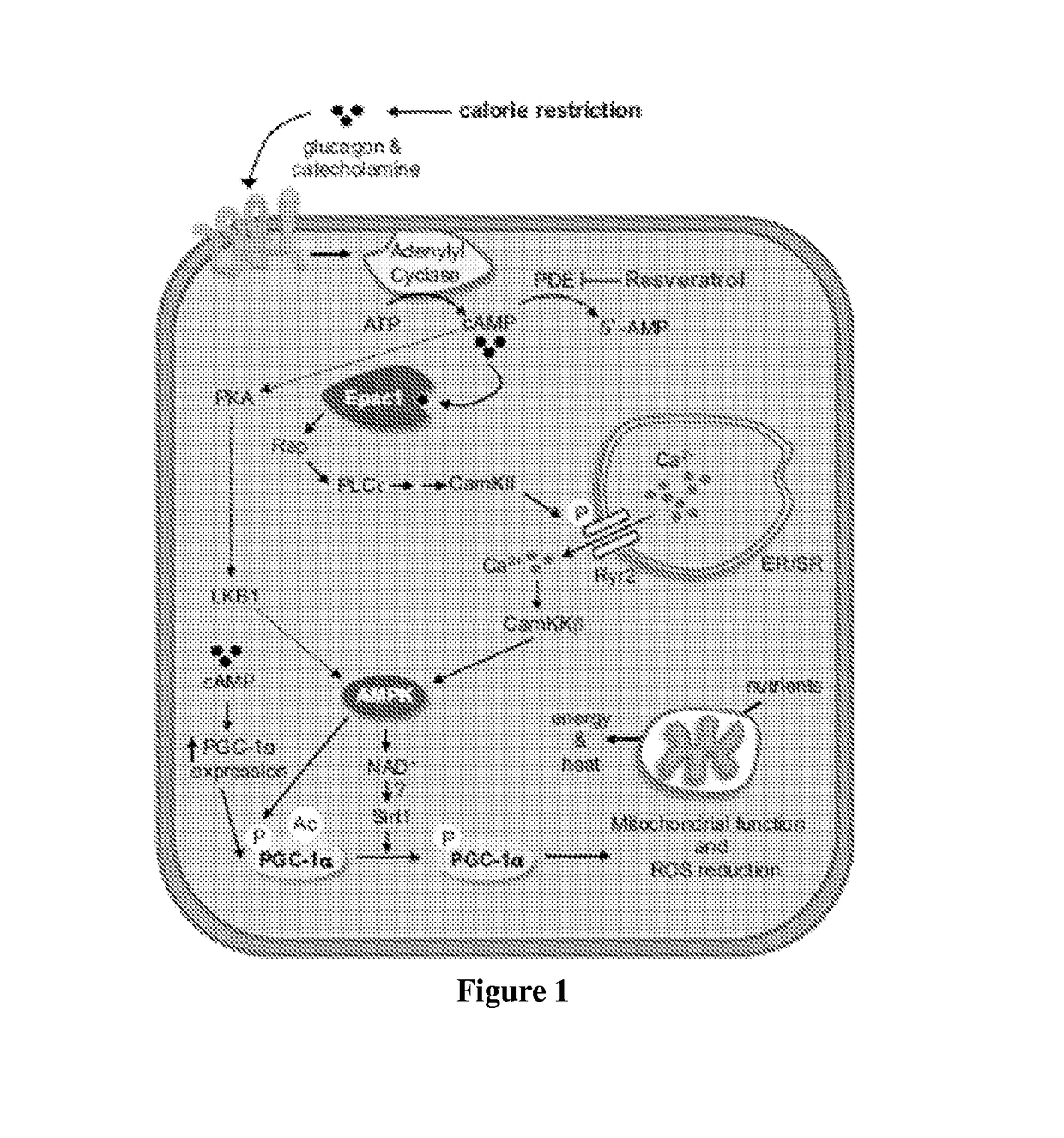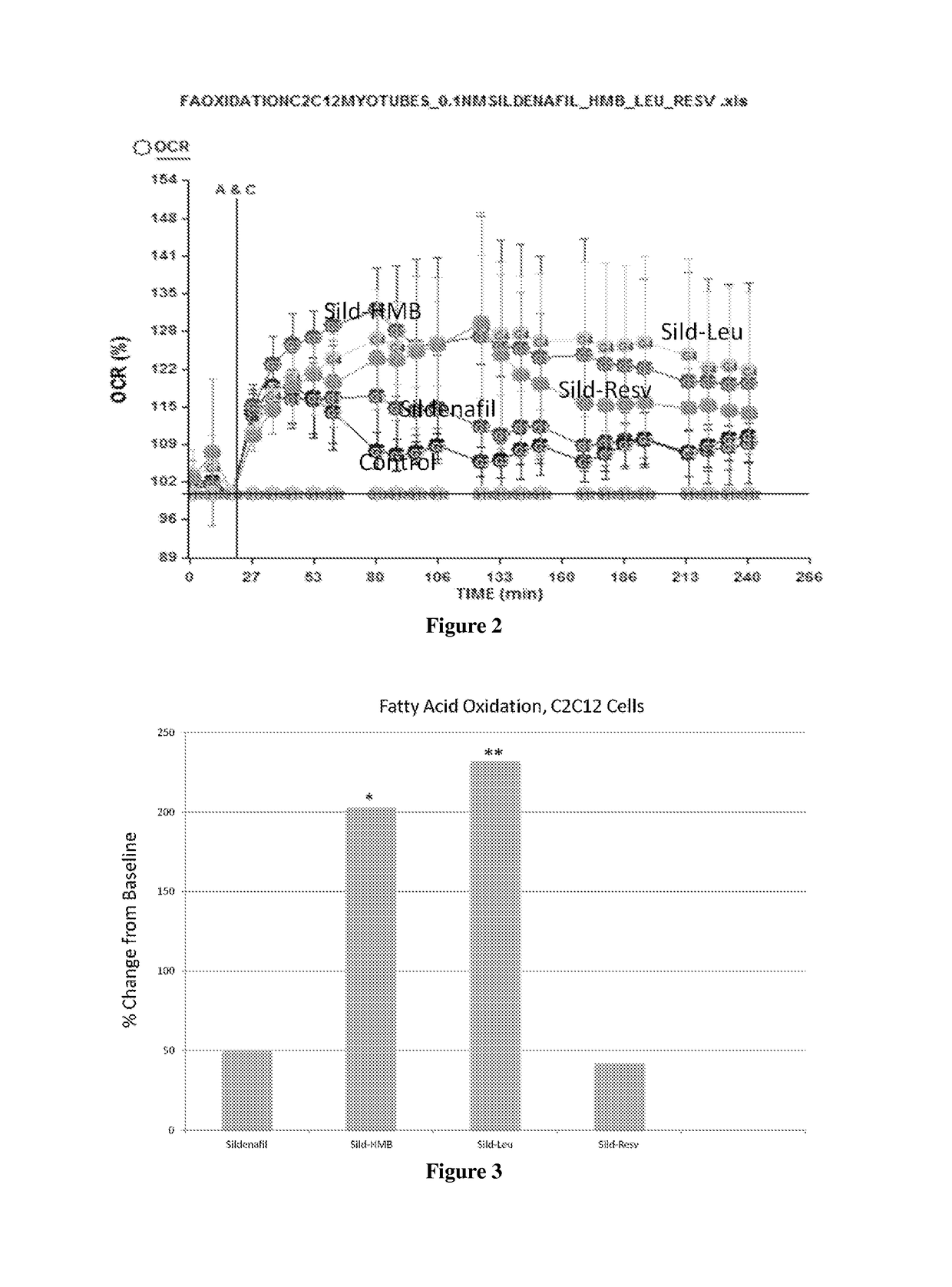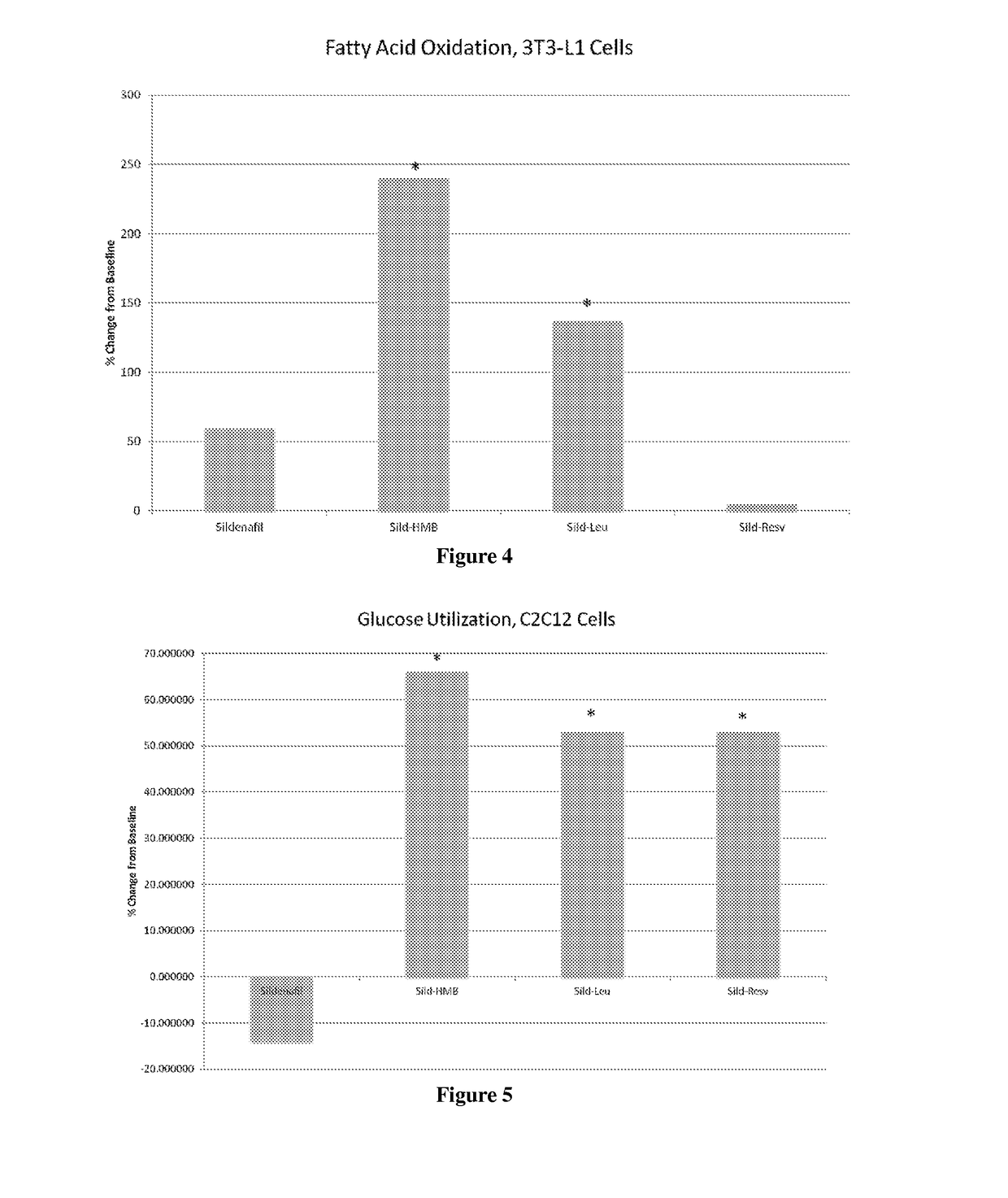Compositions and methods for increasing energy metabolism
a technology of energy metabolism and compositions, applied in the field of compositions and methods for increasing energy metabolism, can solve the problems of low energy metabolism, high incidence of metabolic disorders in humans, and significant burden on public health, and achieve the effects of reducing fat oxidation or insulin sensitivity, and reducing weight or adipose tissu
- Summary
- Abstract
- Description
- Claims
- Application Information
AI Technical Summary
Benefits of technology
Problems solved by technology
Method used
Image
Examples
example 1
ibitors for Regulating Energy Metabolism
[0268]Vinopocetine, which is a PDE 1 inhibitor, was tested in combination with leucine, HMB, and resveratrol for its effects on energy metabolism. Dose-response indicates that concentrations of 0.1 nM or below of vinopocetine exert no effect; accordingly, this was the concentration used in these experiments. Vinpocetine exhibited no synergy with either leucine (0.5 mM) or HMB (5 μM) with respect to either fat oxidation or glucose utilization, although it did exhibit a synergistic effect with low-dose resveratrol 200 nM), resulting in a 70% increase in glucose utilization in adipocytes (p=0.03).
example 2
ibitors for Regulating Energy Metabolism
[0269]Two PDE 3 inhibitors were studied, amrinone and cilostamide, in combination with leucine and HMB for their effects on energy metabolism. Dose-response indicates that concentrations of 10 nM or below for either PDE 3 inhibitor exert no effect; accordingly, this concentration for the PDE 3 inhibitors was used in these experiments. Amrinone exerted no significant synergy with either leucine or HMB. However, combining either leucine (0.5 mM) or HMB (5 μM) with cilostamide resulted in a 92% increase in fat oxidation (p<0.05) in muscle cells and a 58% increase in adipocytes (p<0.05). The cilostamide-HMB blend synergistically increased glucose utilization by 202% in muscle cells (p=0.024) and by 83% in adipocytes (p=0.05), while the cilostamide-leucine blend exerted no effect.
example 3
ibitors for Regulating Energy Metabolism
[0270]Two PDE 4 inhibitors were studied, rolipram and YM796, in combination with leucine and HMB for their effects on energy metabolism. Dose-response indicate concentrations of 0.1 nM or below of rolipram and YM796 exert no effect; accordingly, this was the concentration used in these experiments. There was no synergistic effect of rolipram with leucine, HMB or resveratrol with respect to fat oxidation, glucose utilization or AMPK activity in muscle cells; although rolipram activated AMPK phosphorylation, this effect was not augmented by the presence of either leucine or HMB. However, fat oxidation synergy was evident in adipocytes, with a 125% increase in fat oxidation in response to the rolipram-leucine combination (p=0.026) and a 63% increase in response to the rolipram-HMB combination. However, no synergy was found for glucose utilization or AMPK activation.
PUM
| Property | Measurement | Unit |
|---|---|---|
| weights | aaaaa | aaaaa |
| weights | aaaaa | aaaaa |
| weight ratio | aaaaa | aaaaa |
Abstract
Description
Claims
Application Information
 Login to View More
Login to View More - R&D
- Intellectual Property
- Life Sciences
- Materials
- Tech Scout
- Unparalleled Data Quality
- Higher Quality Content
- 60% Fewer Hallucinations
Browse by: Latest US Patents, China's latest patents, Technical Efficacy Thesaurus, Application Domain, Technology Topic, Popular Technical Reports.
© 2025 PatSnap. All rights reserved.Legal|Privacy policy|Modern Slavery Act Transparency Statement|Sitemap|About US| Contact US: help@patsnap.com



